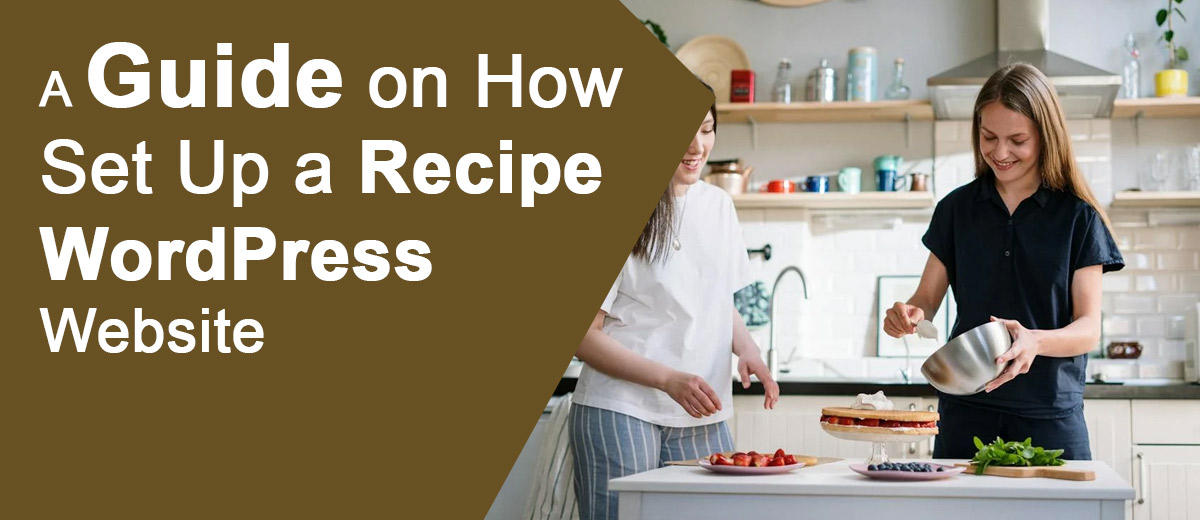In the digital age, sharing and discovering delectable recipes has become a beloved pastime for food enthusiasts worldwide. If you’re passionate about creating a platform to showcase your culinary expertise or curate a collection of mouthwatering recipes, WordPress provides an excellent foundation. In this comprehensive guide, we’ll walk you through the step-by-step process of building your recipe website, turning your love for food into a captivating online experience.
Step 1: Selecting a Domain Name and Hosting
Every great website starts with a memorable domain name. Choose a name that reflects your culinary identity and is easy to remember. Once you’ve settled on the perfect domain, select a reliable hosting provider for your WordPress site. Popular options include Bluehost, SiteGround, and Kinsta.
Step 2: Installing WordPress
With hosting in place, install WordPress on your domain. Many hosting providers offer a one-click installation process, simplifying the setup. Follow the prompts, create your login credentials, and you’ll have a functional WordPress site ready for customization.
Step 3: Choosing a Recipe-Friendly WordPress Theme
Explore WordPress themes designed for recipe websites. Look for features such as recipe cards, clean layouts, and easy navigation. Popular recipe themes include Foodica, Neptune, and Basil Recipes. Install and activate your chosen theme to give your site an appealing culinary aesthetic.
Step 4: Essential Plugins for Recipe Functionality
Customize your website’s functionality with plugins tailored for recipe sites. Consider plugins like WP Recipe Maker for creating visually appealing recipes, Tasty Recipes for enhanced SEO, and WP Ultimate Recipe for a comprehensive recipe management system. Install and configure these plugins to elevate your site’s recipe presentation.
Step 5: Creating Recipe Pages and Categories
Start adding your recipes by creating dedicated pages for each dish. Organize your recipes into categories such as appetizers, mains, desserts, and more. WordPress allows you to create a user-friendly structure, making it easy for visitors to explore and find their favorite recipes.
Step 6: Adding High-Quality Images and Multimedia
Enhance your recipes with high-quality images and multimedia elements. WordPress supports multimedia embedding, allowing you to include videos, step-by-step images, and featured photos. Create an immersive culinary experience for your visitors, enticing them to try your recipes.
Step 7: Implementing Recipe SEO Practices
Optimize your recipes for search engines by implementing SEO best practices. Utilize keyword-rich titles, meta descriptions, and alt text for images. Leverage SEO plugins like Yoast SEO to enhance your recipe website’s visibility on search engine results pages.
Step 8: Engaging with Your Audience
Encourage audience interaction by enabling comments on your recipe pages. Engage with your visitors by responding to comments and fostering a sense of community. Consider incorporating social media integration to share your recipes across various platforms and connect with a broader audience.
Step 9: Monetization Strategies (Optional)
If you envision your recipe website as more than a hobby, explore monetization options. Consider affiliate marketing with kitchen equipment or ingredients, creating premium content for subscribers, or partnering with brands for sponsored recipes. Monetization can turn your passion into a sustainable venture.
Step 10: Regular Updates and Maintenance
Consistently update your recipe website with new content, seasonal recipes, and engaging posts. Regularly check for plugin and theme updates to ensure optimal performance and security. By nurturing your website over time, you’ll build a reliable platform that continues to delight your audience.
Conclusion: Your Culinary Odyssey Begins
Embarking on the journey to build your recipe website with WordPress is an exciting endeavor that allows you to share your culinary creations with the world. Follow these steps, and you’ll transform your passion for food into a visually appealing, user-friendly online destination. Whether you’re a seasoned chef or an enthusiastic home cook, WordPress provides the perfect recipe for showcasing your culinary prowess.
How useful was this post?
Average rating 5 / 5. Vote count: 1
No votes so far! Be the first to rate this post.


